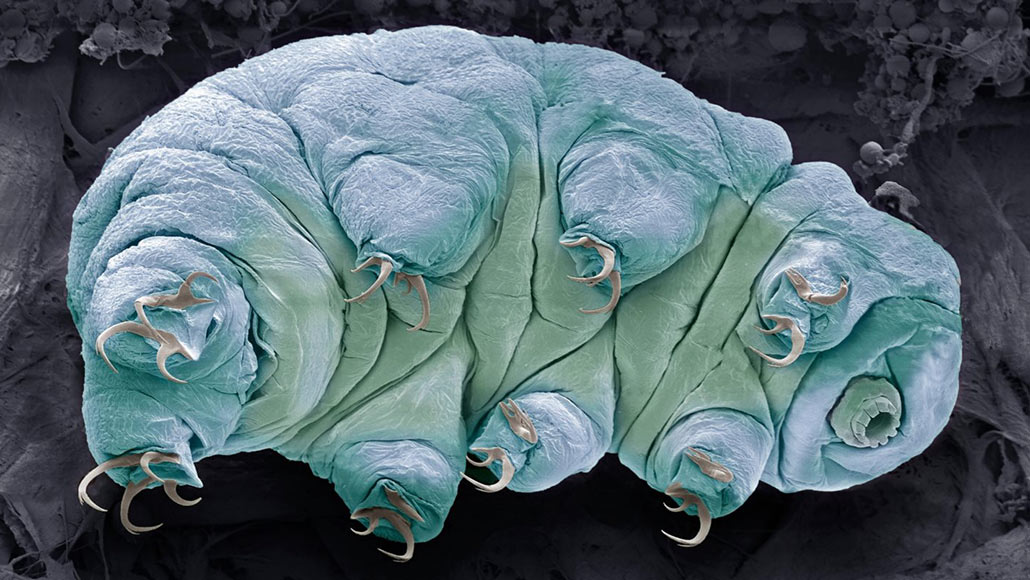How tardigrades protect their DNA to defy death
A ‘fluffy cloud’ of protein shields water bears’ DNA from radiation, drying and other damage

Some species of tardigrades (an SEM image of one shown) can survive doses of radiation up to 1,000 times that which would kill a human. How they do it has been a mystery, but scientists have deciphered one clue of their secret to survival.
STEVE GSCHMEISSNER/SCIENCE PHOTO LIBRARY/Alamy stock photo